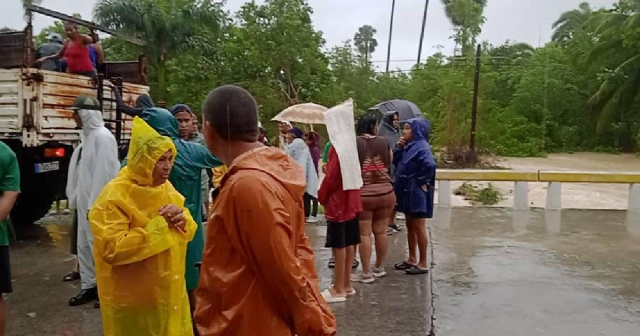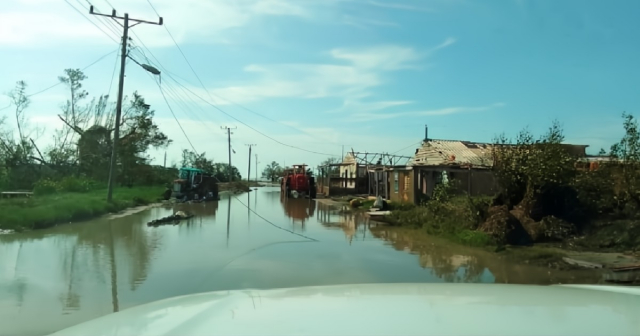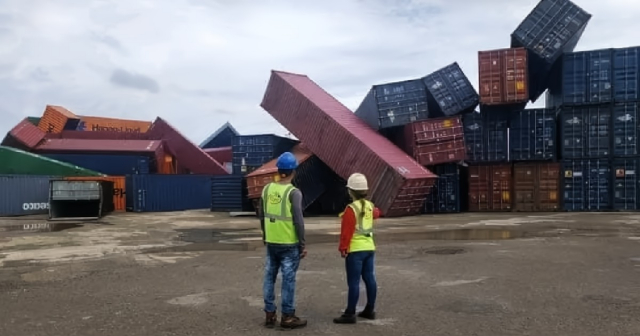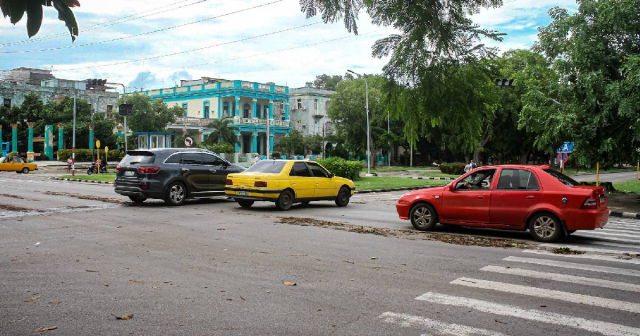In recent hours, the municipality of Moa in the province of Holguín experienced flooding due to heavy rainfall, which even necessitated the evacuation of residents in the Ecrin neighborhood.
The heavy rainfall that began around 5:00 p.m. this Monday caused the rivers Cabaña and Moa to overflow, as reported on social media by journalist Yulieska Hernández García.
The aforementioned source specified that in the Ecrin neighborhood, one of the most affected areas, the flooding caused by the rise of the Cabaña River, dammed by the waters of the Moa River and the opening of the gates of the Derivadora, forced the evacuation of dozens of families.
Hernández García—who shared images of the rains and the evacuation process—indicated that from the early hours of the phenomenon, local authorities, together with the Municipal Defense Council and the Rolo Veguita Defense Zone, were on-site supervising the evacuations.
The official source expressed regret that despite the issuance of alerts and warnings, some residents experienced delays in their departure, complicating the protection process.
The journalist criticized that in some cases, even with the intervention of large vehicles and officials from the MININT, there was resistance from the residents to evacuate the at-risk areas.
The situation in Ecrin became critical when the water overflowed the access bridge to the Comandante Pedro Sotto Alba factory and reached the windows of the nearest houses.
A total of 73 people were moved to secure state facilities, while over 200 chose to self-evacuate.
The main refuge points included the IPU Antonio López Fernández and various facilities related to the nickel industry.
Between 12:00 p.m. on November 25 and the early hours of November 26, accumulated rainfall of 106 millimeters was reported in the city of Moa and 108 millimeters in the Derivadora area.
This volume caused the rivers to swell, necessitating the operation of the gates at the Derivadora, which were opened between 60 centimeters and one meter, temporarily increasing the flooding effect.
At 2:45 a.m. on November 26, the water level began to recede after the opening of the sluice gates was reduced to 80 centimeters.
Although the river continued to overflow the access bridge to the factory, by around 4:30 a.m. the water had receded significantly, allowing for the movement of workers and those evacuating on their own.
Local authorities are focused on assessing the damage, coordinating recovery efforts, and monitoring the condition of critical infrastructure, such as the pipeline connecting the water treatment plant to the service station tank, which is still under repair.
The mobilization of authorities to evacuate the population in Moa stands in stark contrast to the serious deficiencies noted in the evacuation of residents in San Antonio del Sur and Imías during Hurricane Oscar in October.
On that occasion, the lack of coordination, insufficient resources, and delayed responses left many families exposed to unnecessary dangers. Hurricane Oscar resulted in at least eight fatalities, according to official sources.
Filed under:






